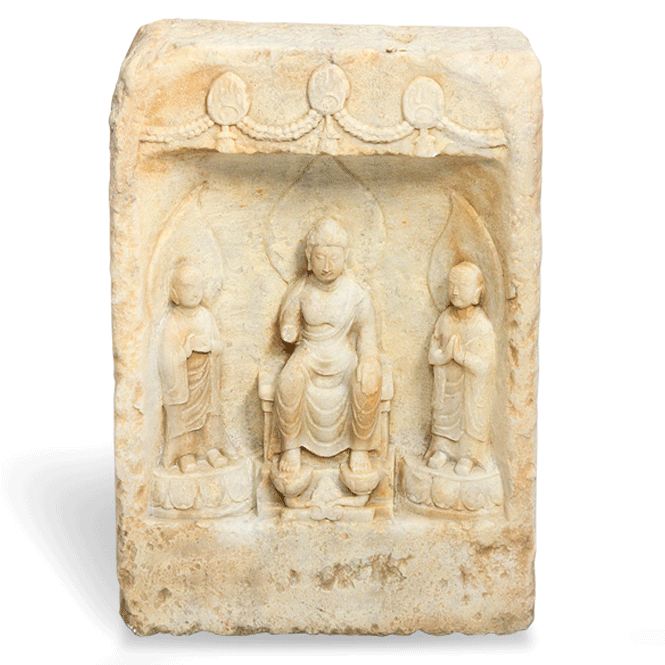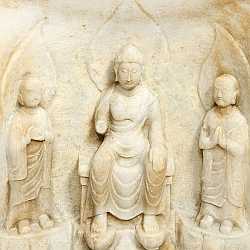Buddhist Stele
 |
|
| Buddhist Stele, collected in Hei Bei Province China, PRIMITIVE I.D. #A1610-024 |
A monument to change!
A monument can be many things - a statue, building, site, marker, memorial or shrine. It can also be something far less tangible. The Gettysburg address is a monument to great oration, the principle of human equality, and iconic phrases like “Four score and seven years ago.” The composition of monuments may differ, ranging from the most durable to the most delicate. Yet, all monuments have one thing in common. They make permanent the impermanent -words, thoughts, actions, deeds, and even lifetimes - just like this week’s New Arrival.
 |
|
| Buddhist Stele, collected in Hei Bei Province China, PRIMITIVE I.D. #A1610-024 |
This week’s New Arrival features a Chinese Buddhist monument called a stele. Sculpted over a hundred years ago, its value transcends the detailed images of Buddha and devotees carved into the stone. It captures a basic Buddhist concept called anicca, which conveys the idea that nothing is fixed and permanent; or stated differently, everything is impermanent and subject to change. Ironically, the artist who made this piece was able to transform the passing to the lasting - the ephemeral to the eternal - and in doing so create a monument to impermanence and change.